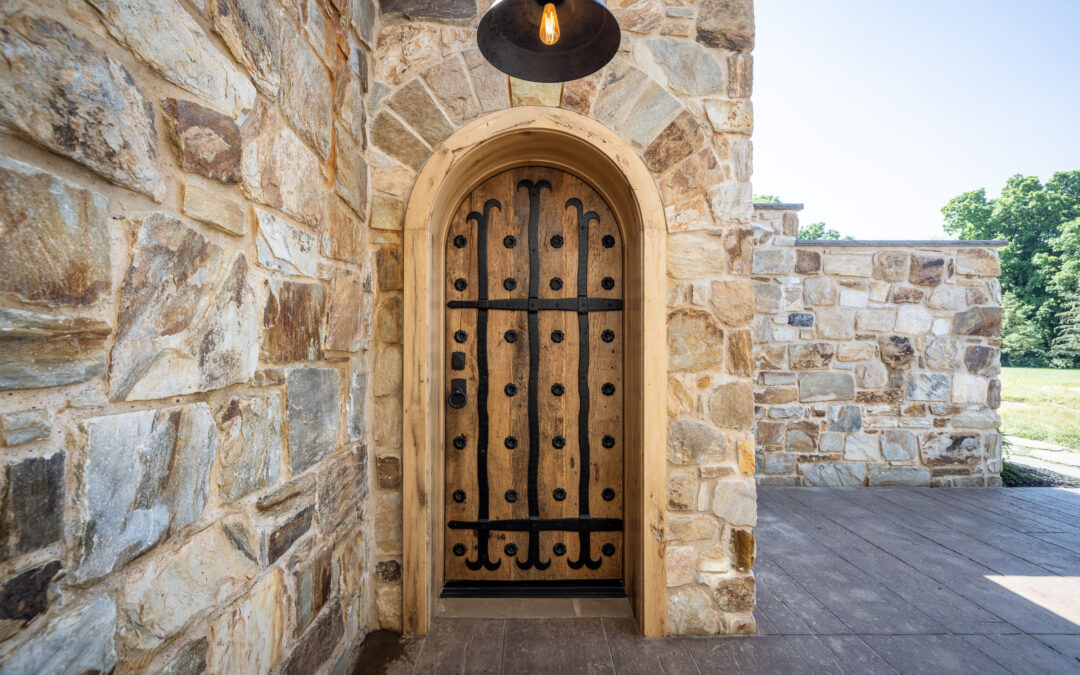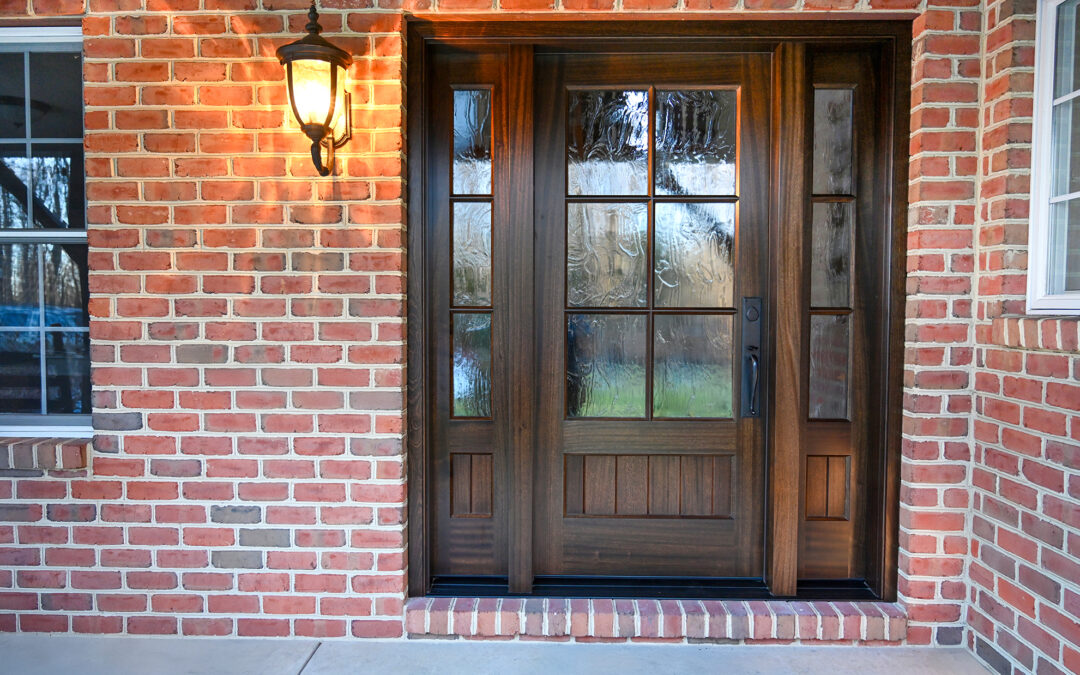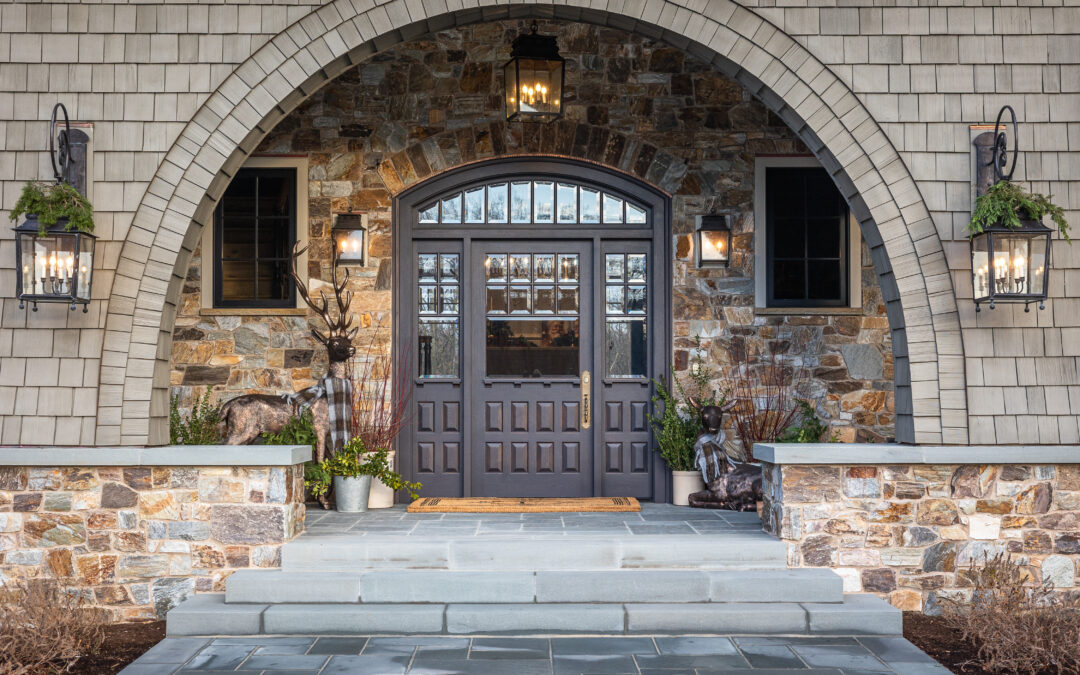
Jun 19, 2025 | General Interest
Across the globe, doors serve as more than mere architectural necessities. They are entryways rich with symbolism, steeped in history, and often designed to reflect the values, beliefs, and artistic traditions of a people. Whether spiritual, social, or practical, doors tell stories about identity, power, protection, and welcome. Let’s explore how doors function symbolically in different parts of the world.
Morocco
Moroccan doors are among the most visually striking in the world. Known for their intricate geometric carvings, horseshoe arches, and vivid hues — especially the iconic blue found in the city of Chefchaouen — a blend of Islamic tradition and colonial influence shapes these doors. The height of Moroccan doors often requires visitors to bow slightly when entering, creating a built-in gesture of humility and respect.
India
Many Indian doors, particularly those of temples and palaces, are carved with scenes from mythology or with images of deities or protective guardians. These ornate doors serve as thresholds to the divine, representing spiritual transition. Often decorated with metal studs, bells, and floral motifs, Indian doors may also feature colorful hangings called torans. They are typically made from fabric, beads, or flowers and celebrate love, devotion, and hospitality.
Europe
Throughout Europe, doors have long signaled personal and cultural values. Red doors symbolize hospitality and protection and are typical of Lutheran and some other Protestant churches. Green denotes peace and prosperity, often seen in Amsterdam as a nod to the city’s wealth and trade. In Italy, fine carvings add artistic grandeur to wooden doors kept in families for generations. French doors often feature elegant ironwork and glass panels, reflecting the country’s preference for elegance. In Ireland and Scotland, residents famously paint their doors in bold colors, a tradition rooted in Celtic culture to symbolize hospitality and attract luck.
West Africa
In many West African cultures, particularly among the Yoruba people of Nigeria, Benin, and Togo, doors are symbolic storytellers. These richly carved surfaces may depict religious ceremonies, royal figures, or spiritual guardians. Found in shrines, palaces, and initiation houses, these doors serve not only to protect but also to record and preserve community heritage. Their artistic depth makes them functional, sacred, and historical all at once.
China & East Asia
In Chinese culture, doors are deeply rooted in feng shui and traditional beliefs. A red door is thought to bring happiness, wealth, and protection. Raised thresholds delineate sacred from secular space. Lion-head knockers add status and security, reinforcing the idea that a door is the first line of both welcome and defense.
The Americas
From colonial to Victorian and mid-century, multiple door styles have remained in vogue throughout North America. Early doors in the American colonies displayed practicality, status, and European heritage. Settlers from the Netherlands famously brought what we now call “Dutch doors.” In the 1800s, doors became ornate and richly carved, followed by solid and more subtly decorated doors in the mid-20th century. But no matter the timeframe, they have usually denoted the prosperity level of the homeowners.
Central and South American doors often reflect diverse native and Iberian cultures in their designs. The paneled symmetry of Spanish Baroque influence can be seen in the oldest cities, while in other places, wooden doors of teak bear vivid coats of blue, pink, or yellow.
More Than Just an Entrance
Incorporating global influences in your doors can speak volumes about your lineage, your travels, or your artistic preferences. While many of the elements described here are most often seen on exterior front doors, they can also be used for interior doors. Whether subtle or bold, these types of design touches make your doors, and your home, uniquely your own.
To explore ideas that will customize your home’s character, contact the experts at Vintage Millwork & Restoration and make your doors mean more.

Apr 15, 2025 | Custom Doors
Like an intriguing opening line to a novel, a luxury front door captures the imagination and creates a desire to know more. The punctuation of color and design becomes an essential element and focal point that perfectly finishes off the exterior while arousing curiosity about the rest of the home. But it’s not just the looks of a front door that elevate the home’s aesthetic — it’s also the quality of the build, its materials, and the craftsmanship used in its creation that makes it a desirable addition. Let’s explore seven reasons why adding a luxury front door is an upgrade you shouldn’t overlook.
- It Elevates Curb Appeal – Before anyone even steps inside, a front door makes a statement. A luxury door signals intention and care — it suggests that what lies within is equally curated. For renovations, it has the power to turn a plain façade into a home with presence; for a new build, it announces that this home’s architect and its owners are confident in their creation.
- It Communicates Without Saying a Word – There’s an unspoken language in well-chosen details. Features such as handcrafting, upscale wood selection, custom glass inlays, upmarket hardware, and a refined finish are subtle cues that speak to the quality of a home and the good taste of its designers and owners. Guests and neighbors will notice, as will passersby on the street.
- It Enhances Security in Style – A door upgrade isn’t just about appearances. An engineered door with layers of wood inside a veneer outer layer, with a high-end locking system and a finish that withstands the elements, looks, feels, and performs with strength, protecting the home and giving owners peace of mind.
- Coming Home Feels Like an Occasion – There’s a certain gravitas to opening a beautiful, weighty door at the end of a long day. It creates a sense of arrival, a transition into one’s own curated space, and a way to shut off the outside world.
- It Insulates – Beyond aesthetics, luxury doors are built robustly to insulate. They reduce drafts, lower energy costs, and keep your environment comfortable, all while quietly reflecting a sense of eco-stewardship and attention to detail.
- It Ages with Grace – Where builder-grade doors deteriorate, quality doors last and develop a unique character. The richness of the wood finish gives an established and authentic feel that lesser doors can’t match.
- It’s a Reflection – A front door is a kind of confident introduction. Its materials, build quality, finish or color, and hardware can exemplify confidence and a touch of refinement, artistic courage, or a simplicity of design and quiet dignity. In the end, a luxury wooden door is a statement.
Upgrade to Custom Wood Doors
A thoughtfully chosen front door is more than an entryway — it’s an expression of the homeowner’s personality and a reflection of the designer’s vision. It also enhances the home, both inside and out, with style and functionality. From first impressions of guests to its everyday use by those who live in the home, investing in a high-quality door is an impactful choice. For more information on creating the perfect custom door for your project, contact the experts at Vintage Millwork & Restoration.

Feb 21, 2025 | Custom Doors
There is a myth among custom door buyers that a one-piece solid wooden door is more durable, more robust, and more desirable than an engineered wooden door. However, in practical use, this isn’t true.
Below, we explore five reasons the right choice for both exterior and interior doors are those with longevity, beauty, strength, stability, and resilience built in. See why an engineered door crafted with layers of wood inside an outer veneer is the superior choice.
- Durability – Wood is naturally affected by temperature and humidity changes. The fibers of the wood absorb heat and moisture, causing it to flex, shrink, and expand depending on atmospheric conditions. This can warp the door and make it fit poorly within its jamb, letting in drafty air and even pests. With an engineered wooden door that uses multiple layers of wood and a veneer surface, the door is far more stable and resistant to dimensional changes.
- Moisture Resistance – The construction of an engineered door — wood layers set perpendicularly with the layers above and below — locks in its shape, providing strength against moisture fluctuations that so often plague solid wood doors without the benefit of alternating graining. In areas with high humidity, an engineered door more easily retains its form through many seasons.
- Consistent Appearance – A solid door made primarily of one piece of timber will often have imperfections in its graining, with knots and blemishes that can affect not only the look of the door but its stability and resilience as well. Water finds its way into these fissures and can wreak havoc on the fibers, causing expansion. Even insects can use these imperfections to invade. Engineered doors allow for better design control, ensuring that the face is uniform and without unwanted avenues to the inside.
- Customization of Design – Cladding a custom wooden door in a high-quality veneer allows for greater flexibility for architects, builders, or homeowners to choose their desired look. The style of the door can be more adaptive to best suit a building’s exterior or interior, and a wider range of finishes may be available.
- Improved Sound & Thermal Insulation – The core of an engineered wooden door is layered, which not only protects against warping and dimensional changes, but also dampens sound. For interior doors, this can be highly desirable, especially in commercial or office settings. For exterior doors, unwanted noise from outside can be blocked for a more peaceful working or living space. Likewise, an engineered wooden door is effective at thermal insulation to provide indoor climate comfort year-round.
Engineered Wooden Doors: The Superior Choice
Although a solid wooden door may seem like the most desirable choice, an engineered door outshines it for durability, temperature and moisture resistance, customization, insulation, and more. For more information and to speak with an expert when choosing the doors for your next project, contact Vintage Millwork & Restoration.

Nov 26, 2024 | Custom Doors
You know it when you feel it. A solid, high-quality door is a tactile experience for your fingers. The weight of the wood, the texture of its grain, the craftsmanship carved into the surface, and the sensation of superior hardware all combine to create functional artistry.
Of course, we’re all familiar with the opposite too: flimsy panels, a hollow core, a lack of workmanship, and big-box store hardware added as afterthoughts. Let’s explore what makes a door “high-end” and the differences you should demand for your next project.
1. Superior Craftsmanship
-
- Precise Construction: Care contributes heavily to quality in constructing a high-end door. Attention to even the smallest detail, traditional joinery techniques like mortise-and-tenon for added stability and longevity, and tightly fitted edges indicate a door was made with an exacting eye.
- Finishing Touches: A carefully sanded door that lets fingertips glide across its surface, one with a stain that enhances the grain, has a flawless look that mass-produced doors typically lack. Even choices made in selecting lengths of wood for their graining are important to the finished product, as these natural attributes may be seen for years to come.
2. Premium Materials
-
- Solid Wood & High-Quality Species: High-end doors often use solid hardwoods such as mahogany, walnut, or oak, selected for their durability and natural beauty. Their dense grains give the wood more mass for a stronger feel and a more satisfying closure, heightening the feeling of quality and giving a sense of security.
- Metal & Glass Accents: Hardware made from a high-quality metal such as bronze, brass, or stainless steel resists wear and gives a door a refined look. Smoothly working hinges that allow the door to be swung easily also signal quality. Thick tempered glass panels add elegance and safety, while decorative glass enhances privacy and aesthetics.
3. Unique & Customizable Design
-
- Tailored Aesthetic: A custom door, one built to fit the architectural style and character of the home, should reflect the materials quality of the home itself. Period-accurate or aesthetically correct, a door should be thought of as an entry, a portal, and a safeguard all in one; from its looks to its functionality, it should serve a higher purpose. Bespoke highlights might include intricate carvings, unique paneling, or other design elements tailored to a client’s tastes.
- Architectural Features: A high-quality custom door often incorporates advanced designs — like arched tops, transoms, or sidelights — that create a grander entrance and make a statement.
4. Advanced Durability & Performance
-
- Weather & Sound Resistance: High-end exterior doors are constructed to resist environmental wear. Quality woods such as mahogany and oak are known to intrinsically stand up to harsh conditions, and many doors incorporate advanced weatherproofing seals and insulation that prevent drafts and reduce noise.
- Security & Safety: The strength of the door’s construction and the stoutness of the wood create a barrier to protect what’s behind it. Premium doors often include high-quality locks, too, for enhanced security.
5. Sustainable & Ethical Sourcing
-
- Eco-Friendly Practices: Look for a door manufacturer that sources their materials sustainably, using responsibly harvested wood and eco-friendly finishes. This way, the door will protect not only its home or business, but also the planet from an overharvesting of resources, thus reducing our carbon footprint and passing on a healthier Earth for future generations.
- Longevity as Sustainability: A durable door, finely crafted using high-quality materials, reduces the need for frequent replacement, which contributes to long-term sustainability by minimizing waste. Today’s throw-away consumerism needn’t encroach on the construction industry if we insist on better materials and forward-thinking actions.
Demand the Very Best
The difference a high-end door makes to a home or business can be extraordinary. Its beauty, strength, and durability support the structure’s overall aesthetic while also safeguarding those who rely on its functionality. To learn more about quality custom doors and how they can make all the difference in your next project, consult the experts at Vintage Millwork & Restoration.

Oct 2, 2024 | Interior Doors
Interior doors don’t often get the customization treatment, or even the attention, that exterior doors do, but this can be a mistake. The style and atmosphere of an interior are always enhanced by a well-considered door carefully crafted with quality materials.
But which materials are best for interior doors? These eight wood species have characteristics that make them ideal.
- Sapele Mahogany: This tropical African wood is characterized by its durability and rich color, making it ideal for interior doors requiring a touch of elegance and sophistication. Its dense grain provides excellent soundproofing, so it’s an especially good choice for rooms where privacy and quiet are desired, such as offices or bedrooms. This is a wood we recommend for a large portion of our work.
- Poplar: With a uniform grain and attractive pale coloring, poplar is a favored and inexpensive choice for interior doors. Its lack of knots and clean appearance suit modern-style structures particularly well. Poplar doesn’t require much sanding or filling and takes paint very well; however, because it generally has very little character in its graining, it’s not always an ideal wood to stain.
- Walnut: The naturally rich cocoa brown tones of walnut are perfect for adding a luxurious feeling to interior doors that get a lot of use — home offices, libraries, and dining rooms are ideal placements for a walnut door. It also has excellent dimensional stability, meaning it will expand or contract very little in controlled indoor climates, ensuring long-lasting performance.
- Red & White Oak: The strength and durability of oak make it a popular choice for doors that see high traffic inside a home. Red oak adds a warmer, more rustic feel, while white oak is more refined, blending well with modern interiors. Both varieties resist dents and scratches, making them suitable for active family homes.
- Maple: Maple’s fine grain and smooth surface make it attractive for painted or lightly stained finishes in modern interiors. It’s also hard enough to resist wear and tear, lending itself to use as a door for frequently used rooms, like bathrooms and bedrooms, where a sleek, clean look is preferred.
- Knotty Alder: For a warm, country aesthetic, knotty alder’s natural appearance is a smart choice for a rustic or farmhouse-style home. Its softness makes it prone to showing dings and dents, which can add to its lived-in appeal. Alder is well-suited for interior use, where it won’t be exposed to extreme temperature changes or moisture.
- Hickory: Renowned for its hardness and unique grain, hickory is ideal for interior doors intended to stand out as a design feature. Its resistance to wear ensures durability in busy areas, while its bold pattern brings rustic charm to interiors like living rooms or home offices.
- Douglas Fir: Douglas fir’s straight grain and consistent texture make it ideal for minimalist or modern interior doors. It’s lightweight yet durable, perfect for larger door panels inside the home where strength is desired without the heaviness of some hardwoods.
Which Wood Species Is Right for You?
Finding the right combination of a wood’s grain, strength, weight, and color for your interior door can elevate the feel of a space. Likewise, a poorly chosen wood species can detract from the overall ambiance while not holding up to the demands of its use.
Before you begin your next interior door project, consult the experts at Vintage Millwork & Restoration — we have the knowledge and experience to help you make the right choice.




